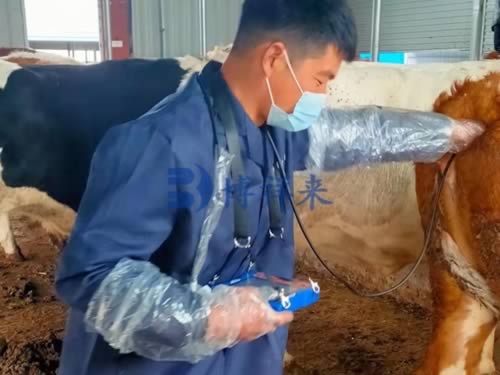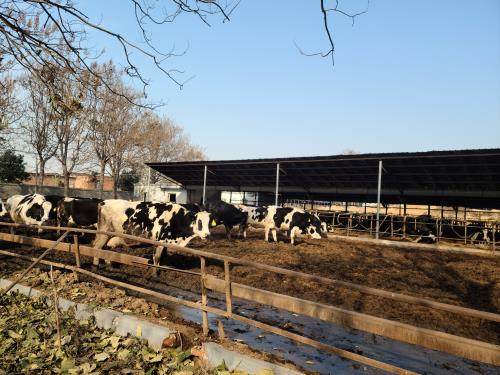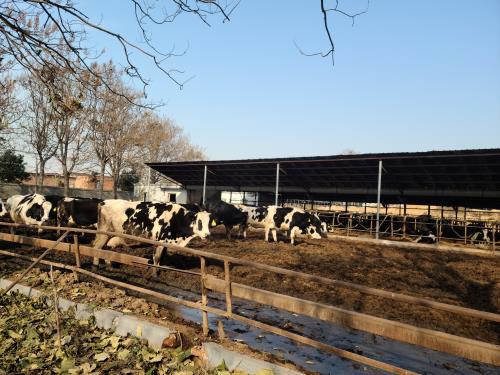For cattle raisers, improving calf production efficiency is economically important. The producer must consider the maintenance cost of each cow for one year according to the specific operation. During the year, all cow maintenance costs must be deducted from the calf harvest. Any cow that did not produce calves that year would greatly reduce profits.
We can use Veterinary ultrasound detection technology to help producers determine which cows have not been bred. The producer can then remove these cows from the herd and prevent unnecessary costs from reducing the company’s profits.

B-ultrasonic machine for veterinary detection of cows
It is recommended to determine pregnancy to maximize breeding efficiency. In the beef herd, the ideal breeding season (natural service or artificial insemination AI) is fixed at 60 to 70 days. This provides two or three services to ordinary cows. Cows that are not pregnant or breed late should be identified; if grazing, they will calve later in the season. Maintenance costs are huge, although they vary greatly between farms and years.
After the breeding season (for example, 45 to 60 days), the pregnancy of the beef cattle should be confirmed immediately; if the breeding season starts from June 1st and ends in early August, it can be completed in late September, and the cows in the summer pasture still have a lot of meat . This allows the profitable sale of non-pregnant cows before the start of expensive winter feeding. If you find too much profit or suspect bull performance problems, it may be invaluable to determine early pregnancy by ultrasound 50 days after the start of the breeding season. The target 65% of the cows should be pregnant in the first cycle of the herd, so by the 50th day, it can be set as the 30-day pregnancy to determine the success rate. Supplementary AI or new bullish momentum may not be successful, and further research is needed.
Cows should be checked to determine their pregnancy status. If the cows are found to be open, they can be synchronized with prostaglandin F2α into estrus. Or timed artificial insemination. The most commonly used method to determine pregnancy and evaluate the ovaries is veterinary B-ultrasound testing, and ultrasound is increasingly used.
B-ultrasound ultrasound examination for veterinary use has the following advantages:
Early detection of cows (28-32 days after breeding) can obtain diagnostic information about the condition of the ovaries and uterus.
The viability of the embryo or fetus can be evaluated, for example, by visualizing the fetal heartbeat.
Twins are easier to spot.
The male and female of the calf can be determined.
The age of conception can be estimated more accurately.
The concept can be shown to the producer, and other herd health checks should be considered when checking the pregnancy of cows. These include accurate assessment of physical condition, reproductive tract, nipples and breasts, feet and legs, teeth, and early neoplastic eye disease. Vaccinations, internal and external parasite control, and beef calf processing can also be carried out at this time.








